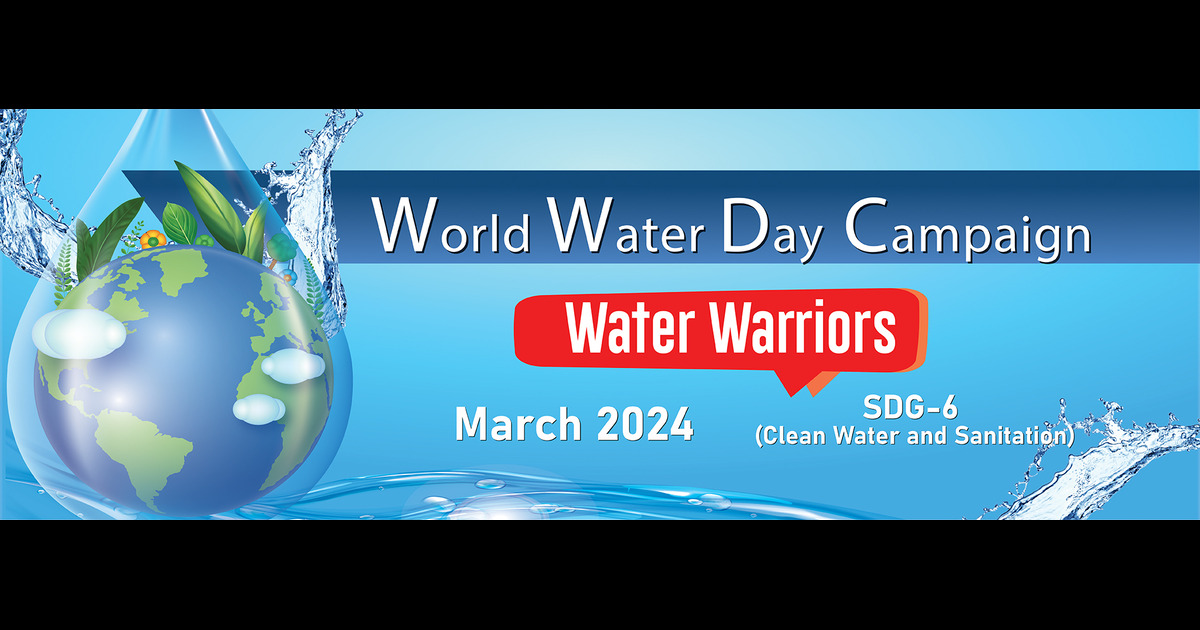World Water Day - Pledge One Day For Water

The water crisis is hitting every corner of the world. From wealthy states like California to the poorest countries like Somalia, the availability of clean and safe water for human consumption is becoming scarce. Back home, Bengaluru is currently reeling under a severe water crisis.
Pollution, environmental changes, political factors, mismanagement, and excess consumption for non-human purposes are reducing water availability. According to UNICEF, half of the world's population will face water scarcity by 2025. The ramifications would be severe.
An estimated 700 million people will be displaced due to water scarcity. Children will bear the brunt in areas of extreme water stress. Can we do anything about the impending crisis? Yes, we can.
One Day for Water
The United Nations Sustainable Development Goal (SDG) 6 is specifically on water issues. It calls for clean water and sanitation. SDG6 has the following targets to achieve by 2030:
-
Universal access to safe drinking water.
-
Improving water quality by reducing pollution and mismanagement and increasing water reuse and recycling.
-
Increasing water use efficiency across sectors.
-
Protect water-based ecosystems like wetlands, rivers, aquifers, lakes, mountains, and forests.
In line with these targets, the UN observes World Water Day every year on March 22. This day allows us to ponder over water-related issues and actions we can take to mitigate the water crisis. Around this day, the UN also releases the all-important UN World Water Development Report, which gives a detailed analysis of water and sanitation.
Using World Water Day as a platform, let us pledge this one day for water and be the proponents of change.
What Can We Do?
Our households are the first place to begin with. Water conservation efforts and efficient water use will help reduce overconsumption.
Actions that we can take at home:
-
Installing rainwater collecting mechanisms.
-
Setting up small wastewater recycling equipment at home.
-
Install low-flow showerheads in the bathroom.
-
Identify and repair leaky plumbing.
-
Employ efficient landscape watering methods.
-
Put a sand-filled water bottle in the toilet flush tanks.
-
Use washing machines only on full loads.
-
Use a bucket of water to clean your bike than running a hose.
-
Wash fruits and vegetables in a bowl rather than under a tap.
-
Water your plants early in the morning to prevent evaporation.
-
Use automated watering systems to irrigate your plants.
Apart from these, we can always observe and find ways to stop water wastage in our surroundings. A bit of creativity can help find innovative solutions.
Actions that we can take at the community level:
At the community level, water conservation is a collective effort.
-
We can collectively decide to stop dumping waste in our lakes, rivers and other water sources.
-
Restore ponds to collect more water.
-
Identify water-polluting sources and alert the authorities.
-
Undertake reforestation activities.
-
Generate awareness of efficient water use.
-
Use of efficient production methods that minimise water use.
For Our Future
The water crisis will hit humanity hard. Already, its impact is being felt in many countries. We can stop the impending doom only through collective efforts. Take one day for water and use it to conserve water. This is for our future.
Collaborative learning is the best way to teach children about water conservation and its impacts. At Fairgaze, we are conducting a World Water Day campaign for kids. Make the children participate in it and get invaluable insights. Know more about the campaign here.

